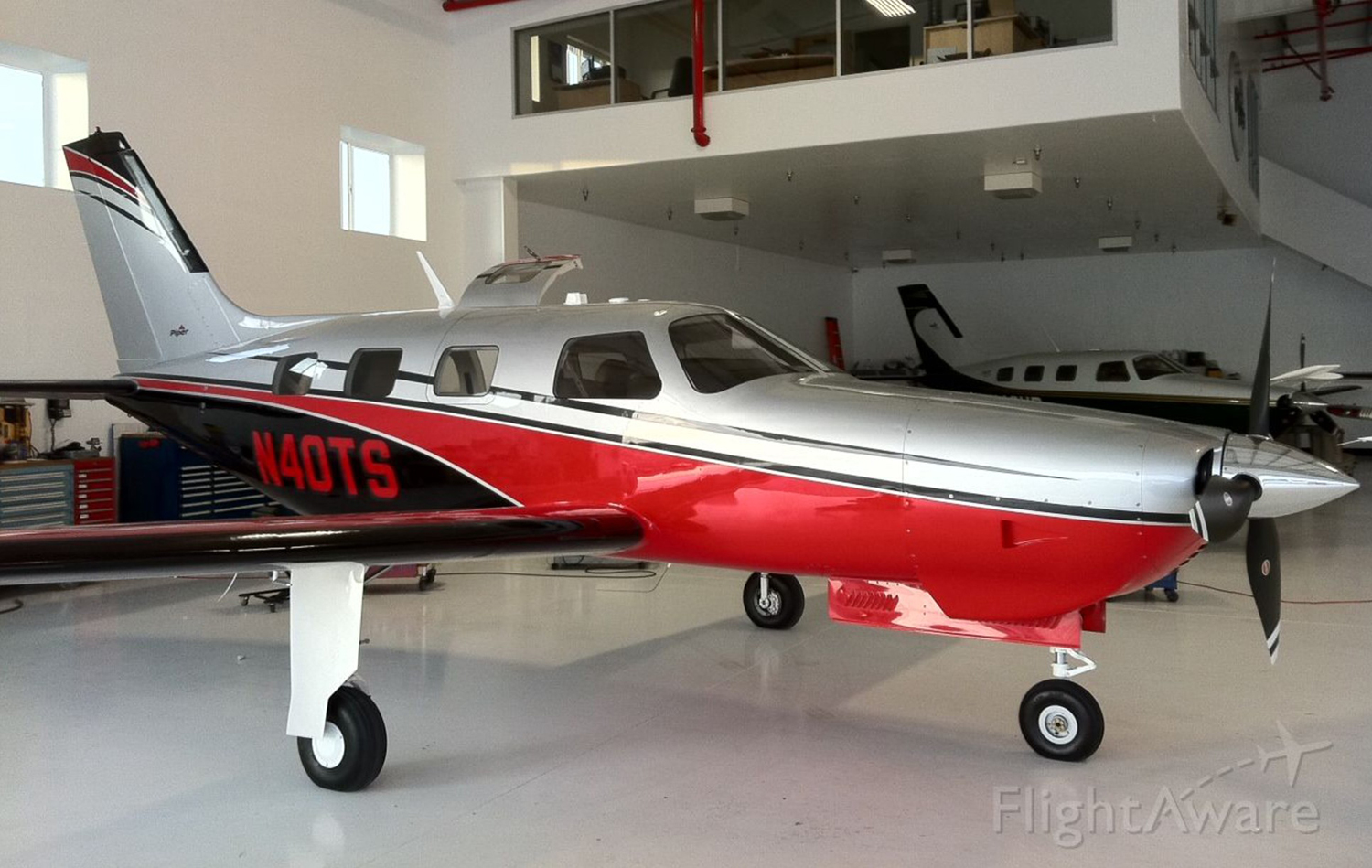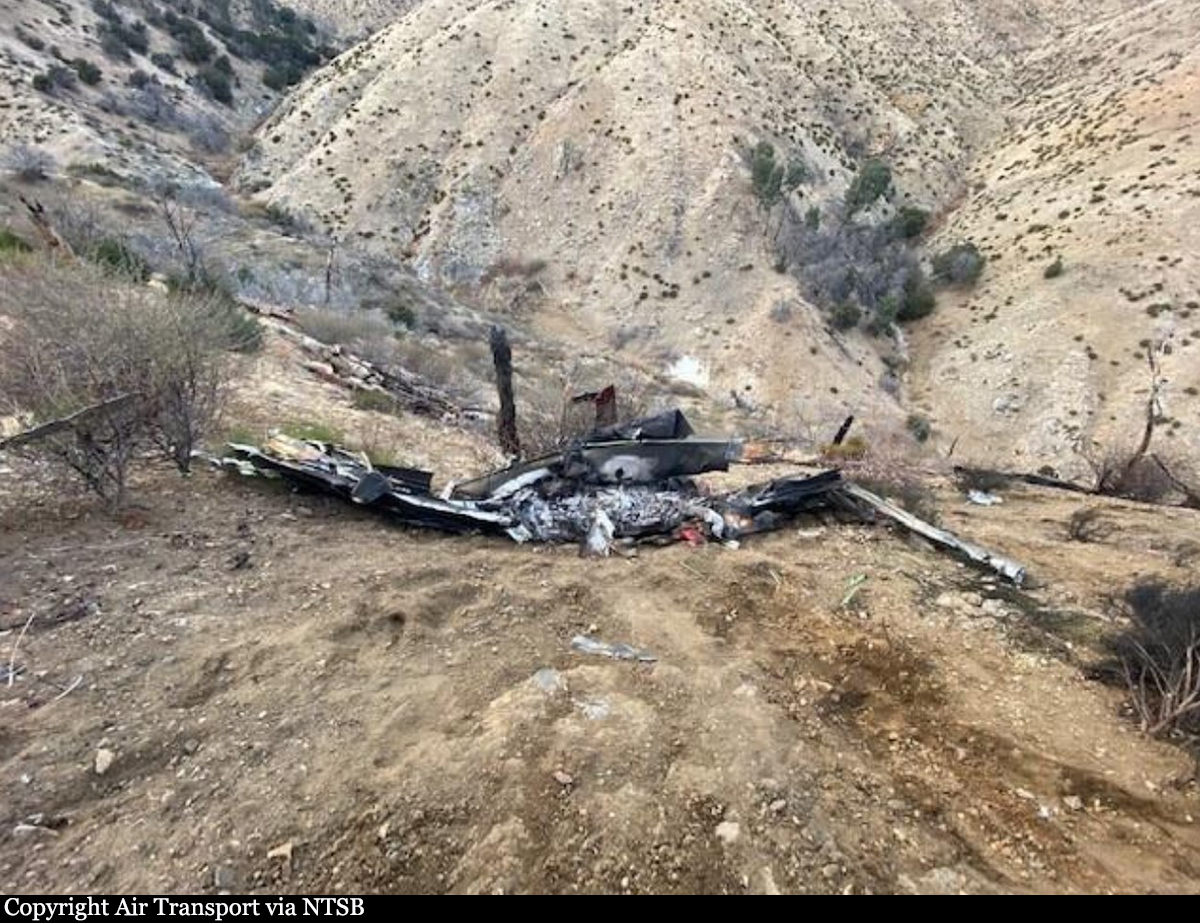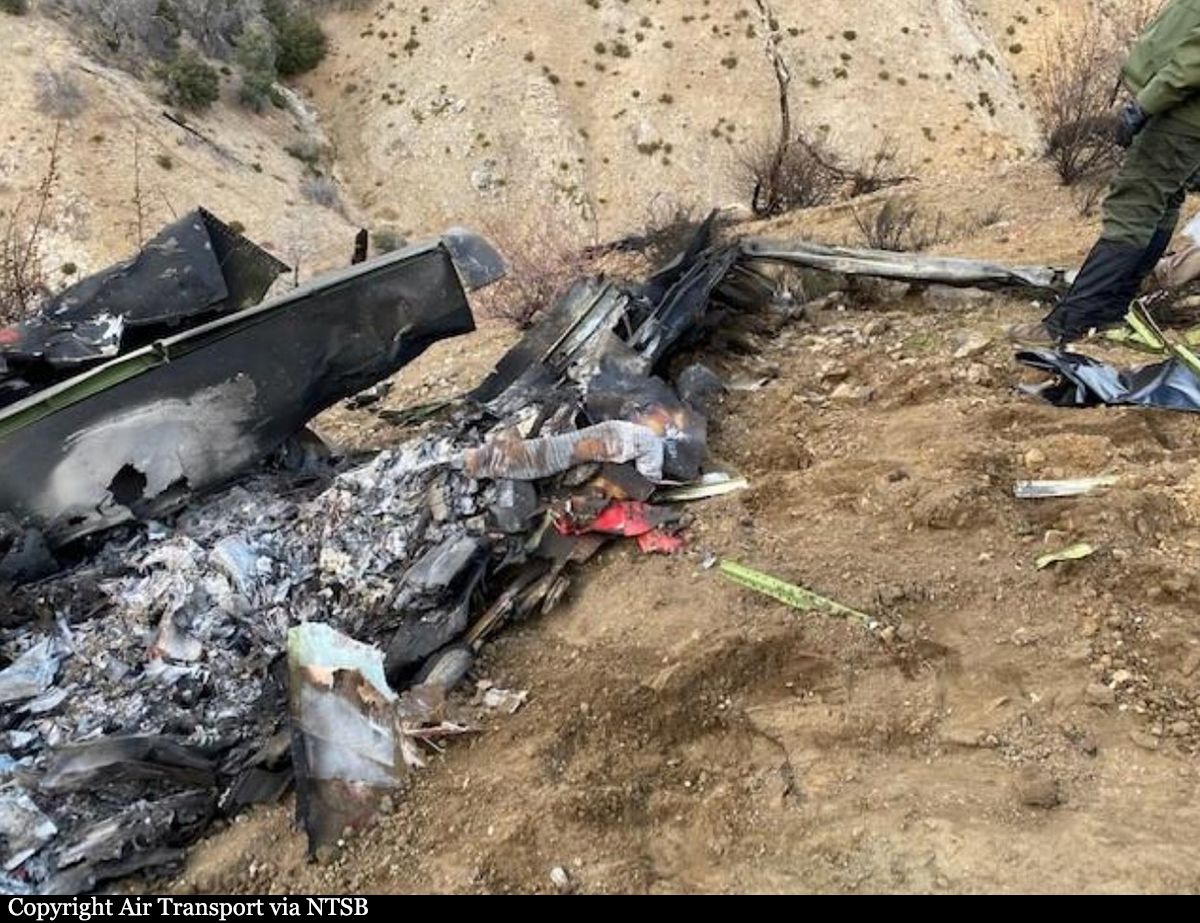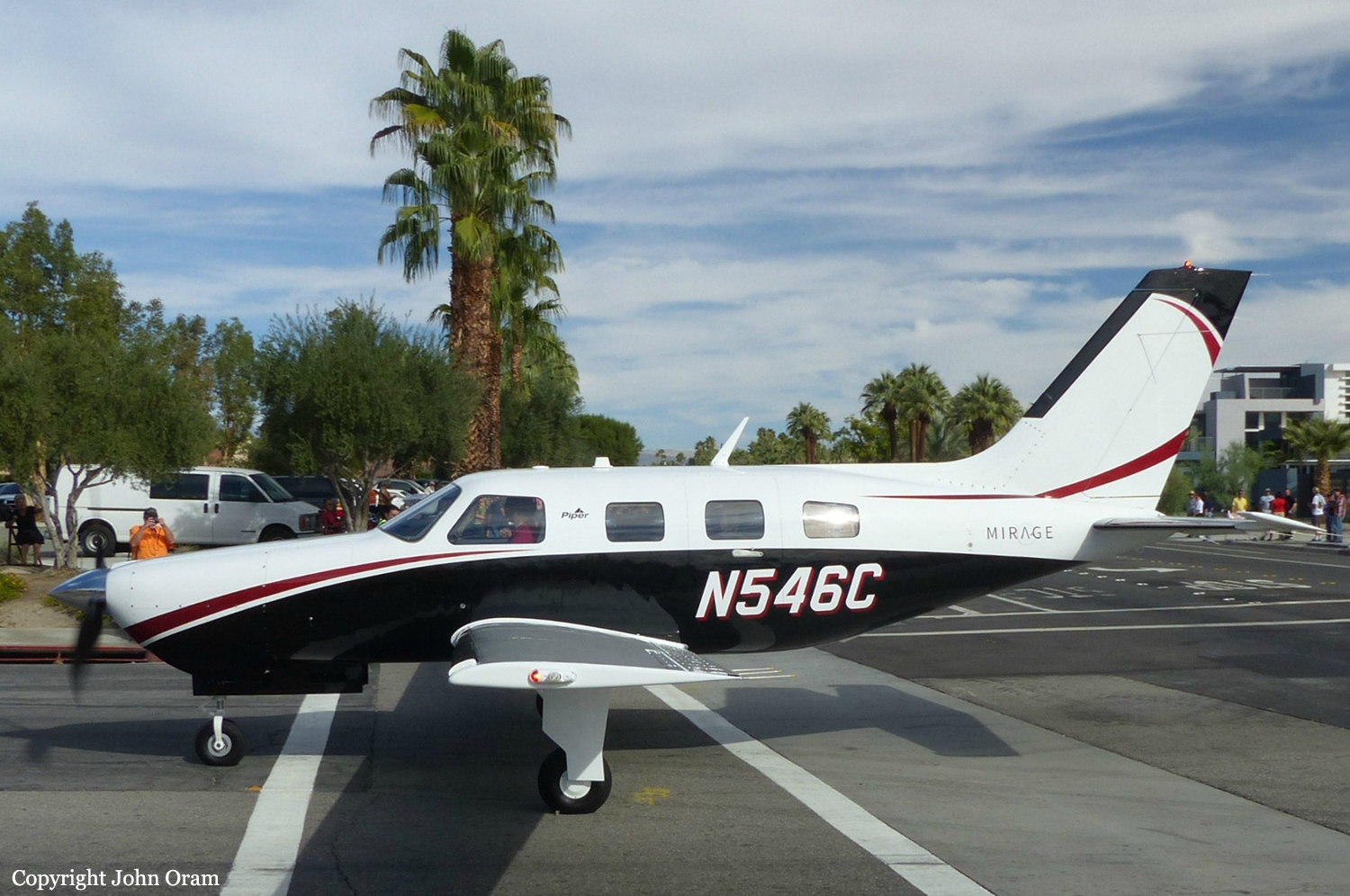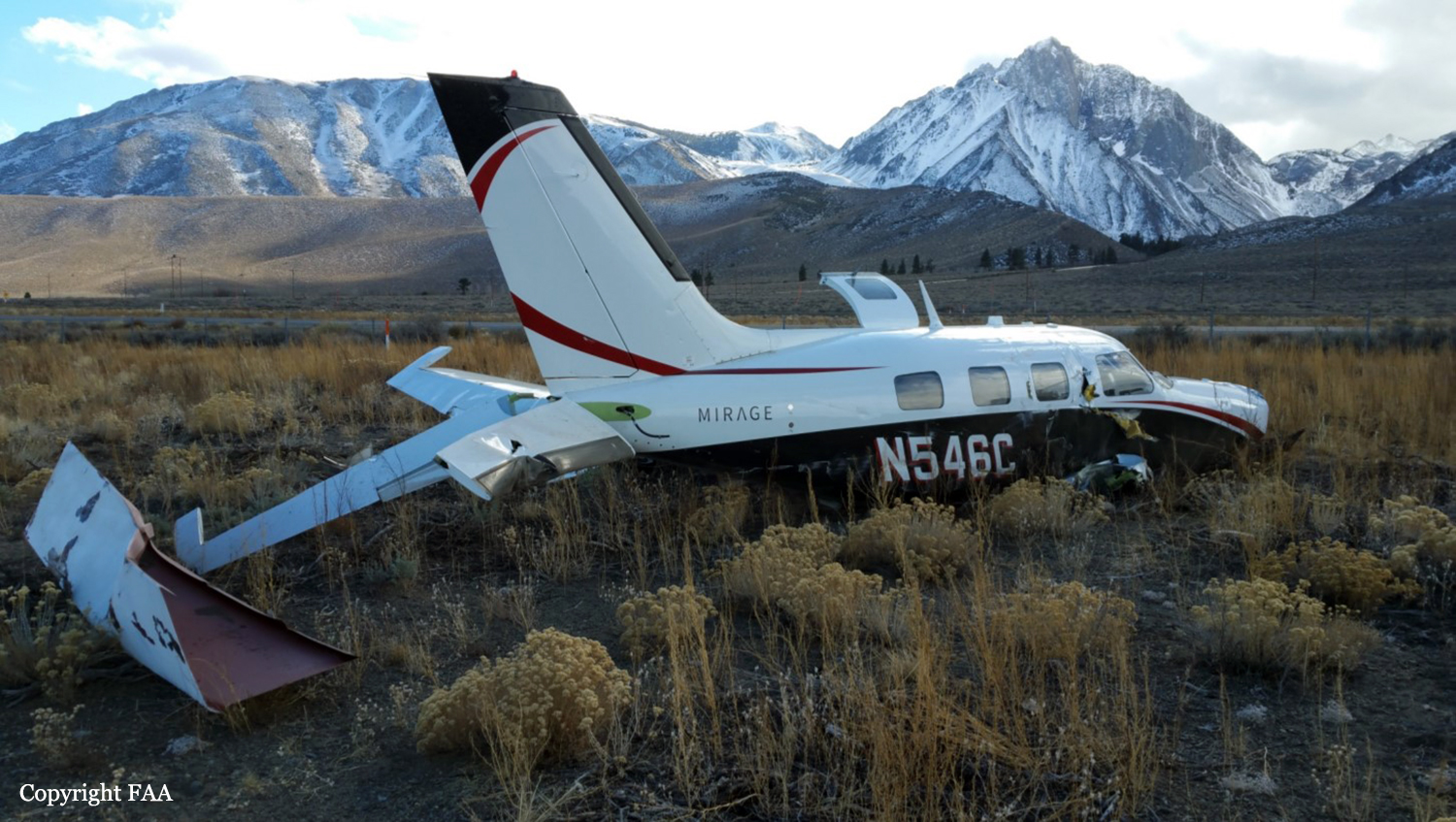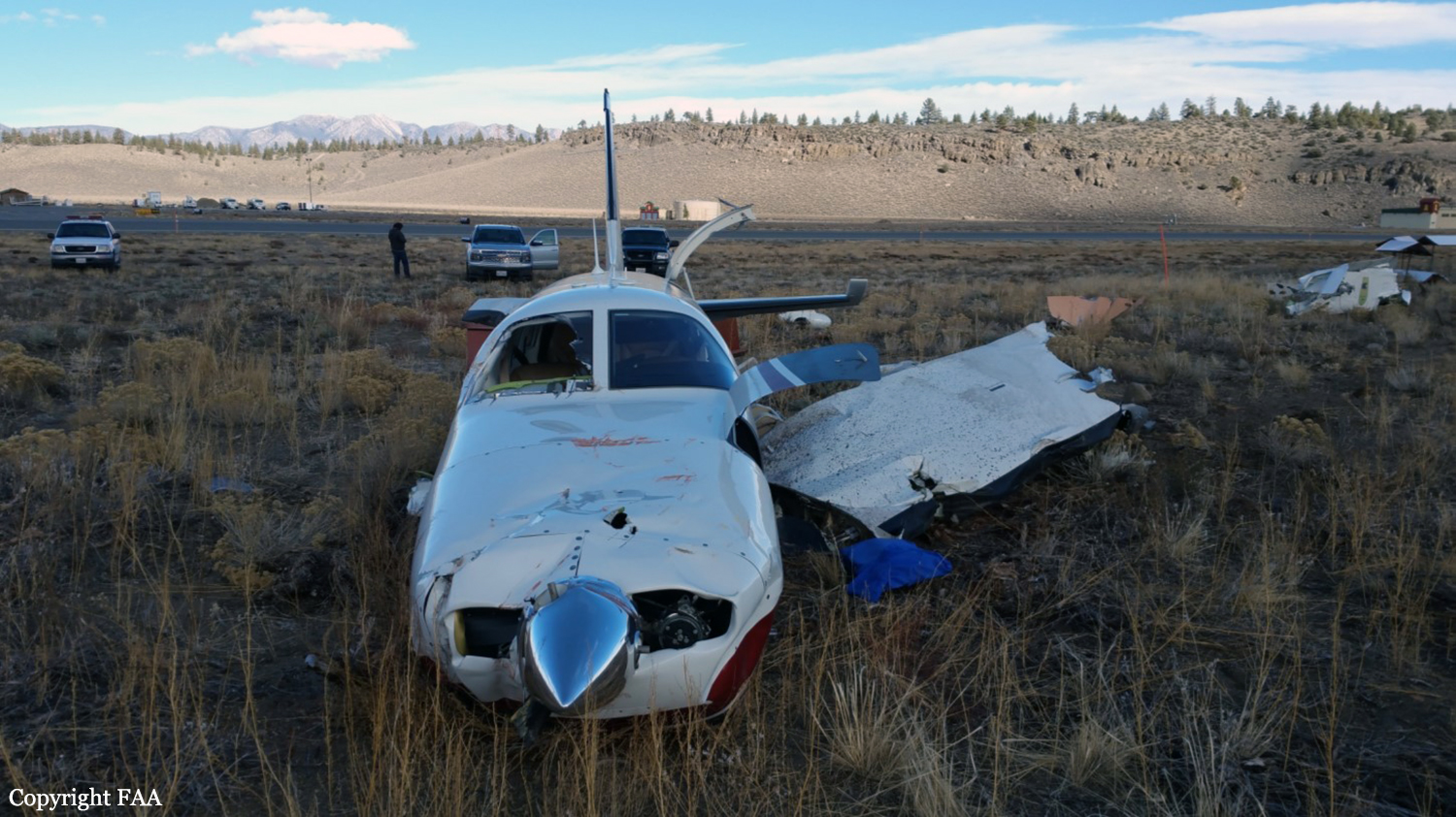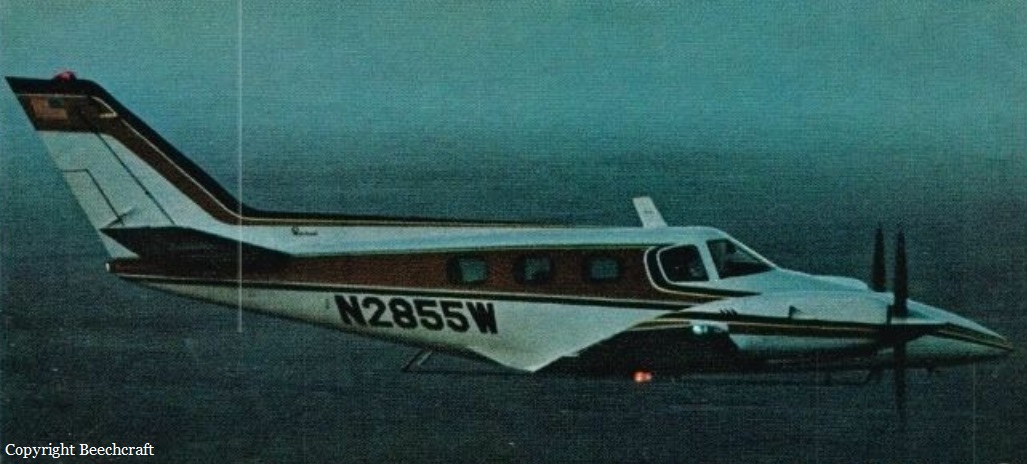Crash of a Piper PA-46R-350T Matrix in Tehachapi: 1 killed
Date & Time:
Feb 13, 2021 at 1627 LT
Registration:
N40TS
Survivors:
No
Schedule:
Camarillo – Mammoth Lakes
MSN:
46-92156
YOM:
2010
Crew on board:
1
Crew fatalities:
Pax on board:
0
Pax fatalities:
Other fatalities:
Total fatalities:
1
Captain / Total hours on type:
63.00
Aircraft flight hours:
877
Circumstances:
The non-instrument-rated pilot departed on a cross-country flight. Radar track data revealed the airplane traveled on a relatively straight course to the northeast for about 32 minutes. Near the end of the flight track data, the track showed an increasingly tight left spiraling turn near the accident site. The airplane impacted steep sloping terrain, and a postimpact fire ensued. As a result of the impact, the airplane was segmented into several sections. Examination of the wreckage revealed no evidence of mechanical malfunction or failures that would have precluded normal operation. The attitude indicator instrument was disassembled, and the vacuum-powered rotor and housing revealed rotational scoring damage, indicating the instrument vacuum system was operational at the time of the accident. The investigation found no evidence indicating the pilot checked the weather or received weather information before departure. The surrounding weather reporting stations near the accident site reported wind conditions with peak gusts up to 47 knots around the time of the accident. The pilot likely encountered mountain wave activity with severe turbulence, which resulted in loss of control of the airplane and impact with terrain. Contributing to the accident was the pilot’s failure to obtain a preflight weather briefing, which would have alerted him to the presence of hazardous strong winds and turbulent conditions. Postmortem toxicology testing of the pilot’s lung and muscle tissue samples detected several substances that are mentally and physically impairing individually and even more so in combination for performing hazardous and complex tasks. However, blood concentrations are needed to determine the level of impairment, and no blood samples for the pilot were available. While the pilot was taking potentially impairing medications and likely had conditions that would influence decision making and reduce performance, without blood concentrations, it was not possible to determine whether the potentially impairing combination of medications degraded his ability to safely operate the airplane.
Probable cause:
The pilot’s encounter with mountain wave activity with severe turbulence, which resulted in a loss of airplane control. Contributing to the accident was the pilot’s failure to obtain a preflight
weather briefing.
weather briefing.
Final Report:
